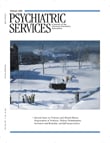Datapoints: Mapping Estimated County-Level Income and Binge Drinking Among California Men
The California Health Interview Survey (CHIS) (www.chis.ucla.edu) has been conducted biannually since 2001 and is the largest subnational household telephone interview survey in the United States. In 2005 there were completed responses for 43,020 adults, representing 29.7 million Californians. Among men, an estimated 3.2 million (24.7%) engaged in binge drinking.
We conducted an ecological study of CHIS's estimated binge drinking rates per county and county group.
We asked whether aggregated estimates of individual demographic factors associated with individual binge drinking would explain some of the county-level variation in binge drinking rates. From the Web-based system, we extracted estimated binge drinking rates among specific demographic groups of men (less than 300% federal poverty level [FPL], 18–44 years, white, no postsecondary schooling, and married). A multivariable model used estimates of binge drinking rates among adult men per county or county group as the dependent variable and the percentage of men within each of the five demographic groupings as independent variables. The estimated percentage of men at less than 300% FPL was positively associated with the binge drinking rate at the county or county-group level ( β =.774, p=.016, R 2 =.177). The other four variables were not significant in the model.
Statewide, there were an estimated 5.4 million adult men (41.5%) below 300% FPL, with rates in the 44 counties and county groups ranging from 20.0% to 67.3%. Statewide binge drinking among these lower-income men was 25.2%, with county-level estimates ranging from 11.4% to 36.9%.
Using the same set of independent variables, we found a positive multivariate relationship between the county-level percentage of lower-income men and the percentage of binge drinking among lower-income men ( β =.760, p=.016, R 2 =.206). The univariate relationship is shown in Figure 1 (ArcMap, version 9.2; ESRI, Redlands, California). Figure 1 shows regional variation in income levels and the positive relationship between the percentage of men in a county with lower income and binge drinking rates among lower-income men.

The analyses and map are a unique application of available data that can be used to rapidly determine trends in health risks at county and state levels, which could inform prevention efforts.
Acknowledgments and disclosures
Partial support was provided by Forest Laboratories, Inc., through an unrestricted educational grant.
Dr. Banta and Dr. Haviland have received funding from Forest Laboratories, Inc., to work on data from the California Health Interview Survey. Dr. Przekop reports no competing interests.



